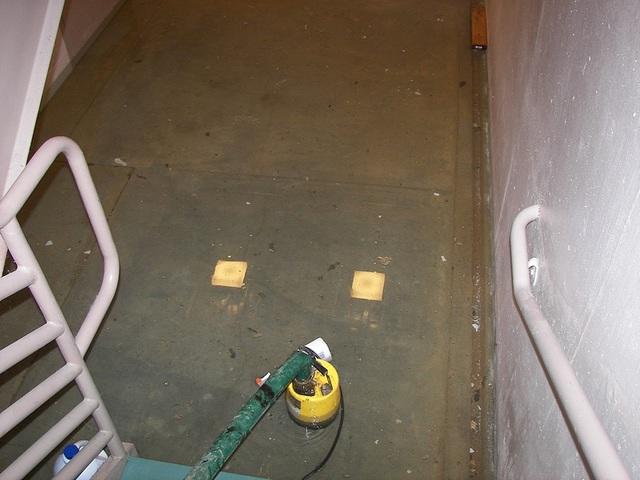
Arriving at the scene of the flooded basement
The first thing that the DryZone crews do when arriving on a "pump out" call is to drop a powerful sucker pump in the flooded area. This is to help get things started, just in case they have to be there for several hours.

Planning ahead
It is always a good idea to bring steel toed rubber boots to a pump out call. There is no telling what could be in that water, so safety is a big concern. Also, It is much nicer to work for hours if your feet are dry.

Water almost up the bottom step
When I arrived on site to lend a hand the sucker pump had already been working for an hour or so. There was still around 7-8 inches of water in this basement. While it was the worst flood I've personally seen, the guys on the crew were trading stories of much worse situations. One foreman said that he once had to put chest waders on to navigate a basement flooded with over 3 feet of water.
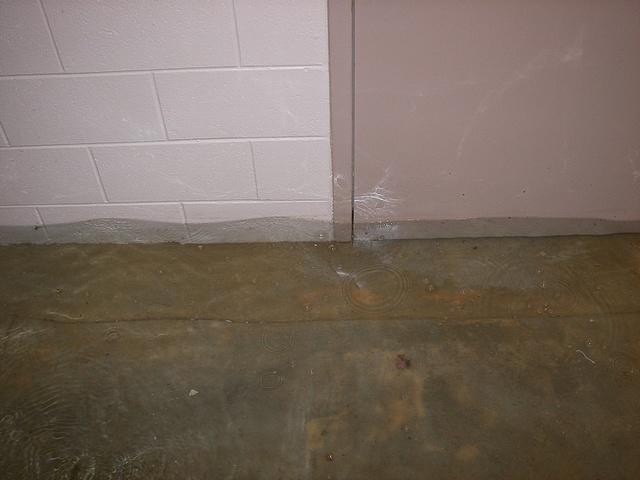
Water line on the concrete blocks
Each block is 8 inches tall, so this picture gives a nice quick measurement of the depth. When we got the basement door opened and could see the unpainted blocks, it became clear that the flooding was much worse at one point.

Around 7 inches of water in the flooded basement
On the right edge of this picture to can see that someone has stored extra panels of drywall which are now ruined. The main focus is the watermark on the concrete wall. Concrete blocks don't such up water as much as paper, drywall, or wood. Basically if you see a line in the wall, the water has been very close to that point.
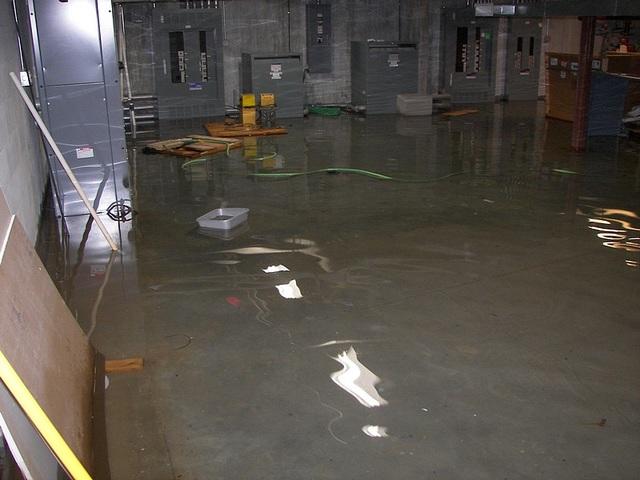
Utilities under water
There is an electric panel on the far wall that wasn't under water, thank goodness. Something like that can be incredibly dangerous. However, there were several other things touching the flood water. It is easy for utilities and ducts to get ruined in this situation.

Loss of storage space
The office used this basement for storing extra desks and file cabinets, all of which are now ruined. Imagine if they had stored more things down there. Any furniture or files would have easily been destroyed in this flood.
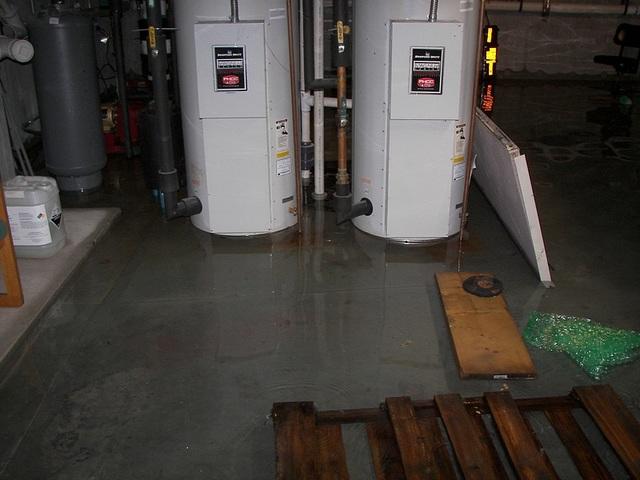
Expensive water heaters
Since the building is so large, there are two large water heaters in the basement. They looked very new and expensive. If the flood had gone unnoticed for longer the water might have rusted the bottom of the tanks. Flooded basements can be very costly, and not just to waterproof. The bigger cost is often in replacing equipment and stored property.
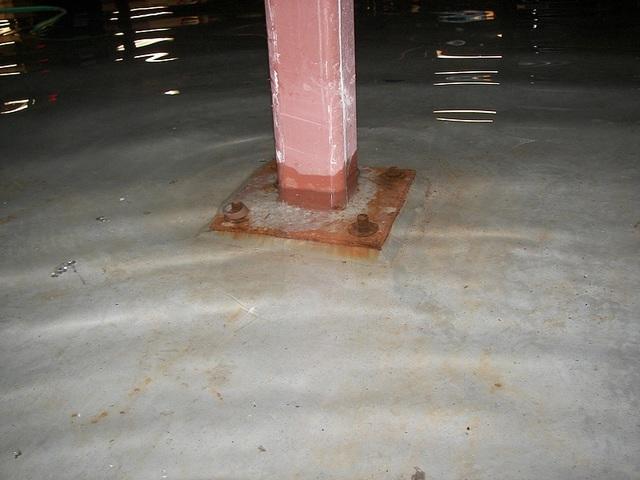
Rusted support column
Rust is very damaging to steel beams and support columns. Major structural problems can develop from letting water sit in the basement for long periods of time.
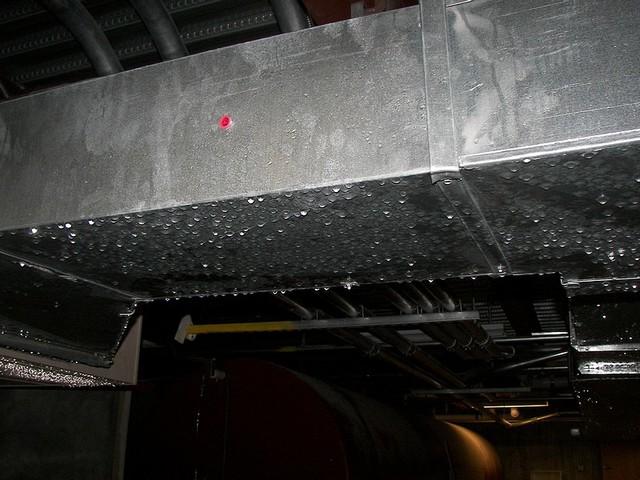
Raining in the basement
The temperature outside was over 90 degrees, so the air conditioner was running full blast. All the water in the basement raised the humidity so much that the cold ducts caused condensation and it looked like rain in the basement. We wiped the drops off and they formed again almost immediately.
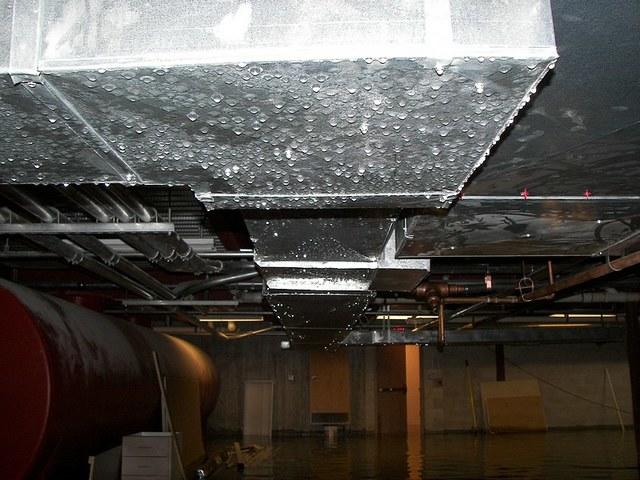
Ruining the air ducts
This much condensation can rust and corrode air conditioning ducts. If your home has the insulated ducts, that fiberglass will stink so bad. Keeping the humidity low will decrease the possibility of these things happening.
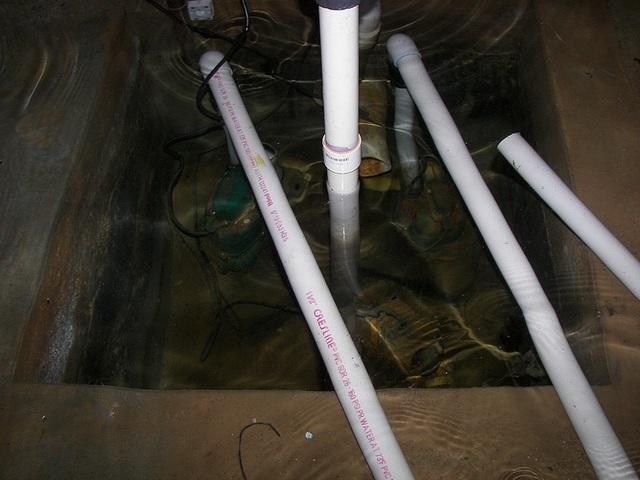
Huge sump pit completely filled
The working pumps just couldn't keep up after one of the breakers was tripped. The importance of a battery back up sump pump system cannot be better represented than in this basement.

A quick fix attempt
These damp rid buckets are meant to remove moisture from the air on a very small scale. Most people put them in a closet. But when we see them in a basement it is almost always because someone was trying to remove a smell. These smells are a result of mold growth, so lowering the humidity and preventing growth is a permanent solution.
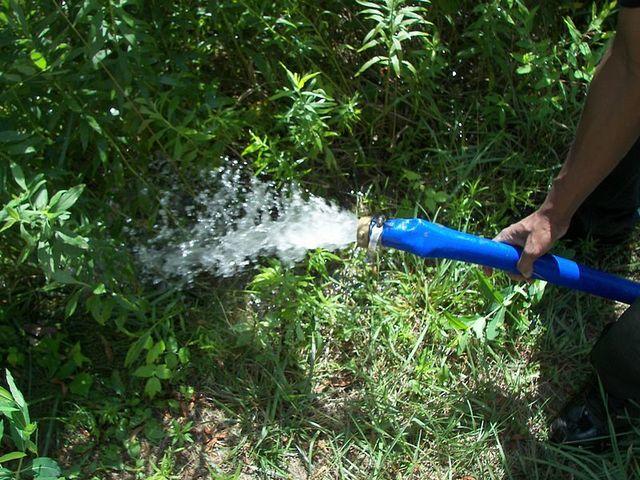
Discharging the flood waters
You can see the force at which the flooded basement is being pumped out. This is just one of the temporary discharge lines. There were still two powerful sump pumps working at the same time.
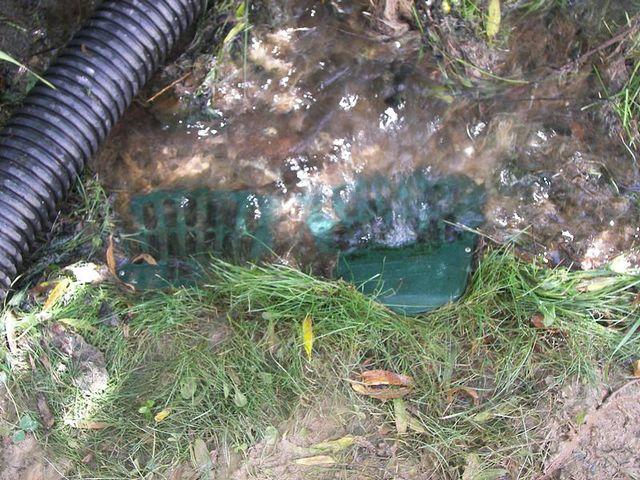
Sump pump discharge
These are the permanent discharge lines for the installed sump pumps. The water was so heavy that our crews eventually removed the green LawnScape outlets to just let the water flow freely. It was like watching a fire hose spraying into the creek behind the building.
